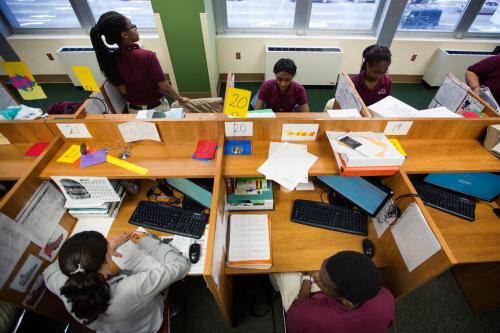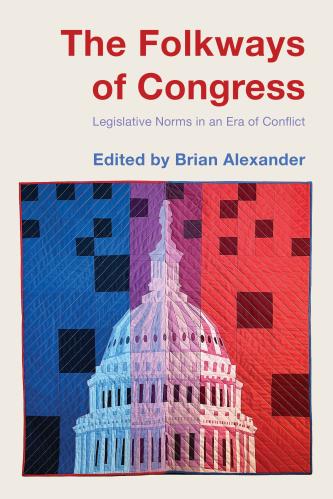In his first major speech as U.S. Secretary of Education, John King encouraged school districts to take steps towards class-based integration. “Research shows that one of the best things we can do for all children—black or white, rich or poor—is give them a chance to attend strong, socioeconomically diverse schools,” King said in January. “We should support innovative, voluntary locally-driven efforts to promote socioeconomic diversity in schools.” King has discussed school integration repeatedly this year and the issue is being debated in policy circles and publicly in a way not seen in nearly 40 years.
These socioeconomic integration plans are compelling because they are pragmatic and offer an end-run around the Supreme Court’s ruling against racial integration plans in Parents Involved in Community Schools (2007). While class-based school integration efforts are promising, much of the optimism for these plans is based on a sketchy understanding of the resistance to racial and socioeconomic integration since the Supreme Court’s Brown v. Board of Education (1954) decision. In order to think about how school integration can work in 2016 and beyond, it is important to understand the history of resistance to school desegregation.
In the final pre-publication stages for my recent book Why Busing Failed: Race, Media, and the National Resistance to School Desegregation, the copyeditor e-mailed to ask me, “Do you really want to refer to ‘busing’ in quotation marks throughout the book?” I opted to keep “busing” in scare quotes to emphasize that this term developed in the years after Brown as a selective way to label and oppose school desegregation.
The “busing” of students to racially integrate schools following Brown was about the constitutional rights of black students, but the story of “busing” has been told and retold as a story about the feelings and opinions of white people. Framing the history of school desegregation in this way has made it possible for parents, school officials, and politicians to describe “busing” for school desegregation as unrealistic, unnecessary, and unfair.
As civil rights advocates continually pointed out, “busing” was a fake issue. Students in the United States had long ridden buses to school, and the number of students transported to school at public expense in the United States expanded from 600,000 in 1920 to 20,000,000 in 1970. In concert with rural to urban migration, school buses made it possible for multi-grade elementary schools to replace one-room schoolhouses and for comprehensive high schools to become commonplace.
School buses, in this era, were among the educational privileges enjoyed by white students. “The white rode buses, the Negro walked long weary miles in all kind of weather, cold, wind and rain, as well as the scortching [sic] heat of summer,” Rosa Parks remembered of her childhood in Montgomery, Alabama. In other parts of the South, as well as New York, Boston, and many other northern cities, students rode buses past closer neighborhood schools to more distant schools to maintain segregation. Linda Brown, the plaintiff in Brown v. Board, rode a bus over twenty blocks to attend a black school, when the white school was only four blocks from her family’s home. In Boston, more than 50 percent of middle-school students and 85 percent of high school students were bused before the court order for “busing” with no objection, until and unless it was linked to desegregation. Put more starkly, then, school buses were fine for the majority of white families; “busing” was not.
White parents and politicians framed their resistance to school desegregation in terms of “busing” and “neighborhood schools.” This rhetorical shift allowed them to support white schools and neighborhoods without using explicitly racist language. As early as 1957, white parents in New York rallied against “busing.” In Detroit in 1960, thousands of white parents organized a school boycott to protest the “busing” of three hundred black students from an overcrowded school to a school in a white neighborhood. In Boston, Louise Day Hicks made opposition to “busing” a centerpiece of her political campaigns. “It was Mrs. Hicks who kept talking against busing children when the NAACP hadn’t even proposed busing,” the Boston Globe noted in 1965. “I have probably talked before 500 or 600 groups over the last years about busing,” Los Angeles assemblyman Floyd Wakefield said in 1970. “Almost every time someone has gotten up and called me a ‘racist’ or a ‘bigot.’ But now, all of the sudden, I am no longer a bigot. Now I am called ‘the leader of the antibusing’ effort.” With “busing,” northerners found a palatable way to oppose desegregation without appealing to the explicitly racist sentiments they preferred to associate with southerners.
Describing opposition to “busing” as something other than resistance to school desegregation was a choice that obscured the histories of racial discrimination and legal contexts for desegregation orders. In covering school desegregation in Boston and other northern cities, contemporary news media took up the “busing” frame, and most histories of the era have followed suit. Our understanding of school desegregation in the North is skewed as a result, emphasizing innocent “de facto” segregation while downplaying the housing covenants, federal mortgage redlining, public housing segregation, white homeowners’ associations, and discriminatory real estate practices that produced and maintained segregated neighborhoods. As policy analysts and scholars like Richard Rothstein, Beryl Satter, and David Freund have shown, “de facto” segregation is a myth. Furthermore, this history neglects the policies regarding school siting, districting, and student transfers that produced and maintained segregated schools.
My goal in writing Why Busing Failed is to change how we talk about and teach the history of “busing” for school desegregation. Rather than starting the story in the 1970s, we need to understand that the battles over “busing” started two decades earlier in the wake of the Brown decision and in the context of civil rights activism in the North. Rather than focusing exclusively on Boston or seeing South Boston’s Irish residents as uniquely prejudiced, we need to understand how white parents and politicians in cities across the country rallied to defend racially segregated schools. And rather than using “busing” as a politically neutral word, we need to understand that this term developed as a selective way to label and oppose school desegregation.
The long history of “busing” for school desegregation is more nuanced, complicated, and important than any one city’s “busing crisis.” My hope is that by seeing the history of “busing” clearly and speaking honestly about the history of civil rights, people who care about educational equality can chart a more just future.
The Brookings Institution is committed to quality, independence, and impact.
We are supported by a diverse array of funders. In line with our values and policies, each Brookings publication represents the sole views of its author(s).









